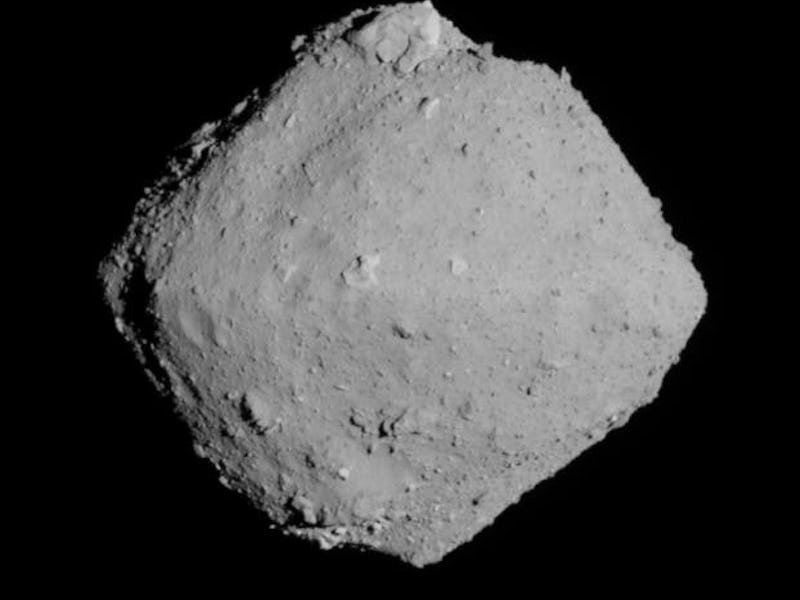Through the eyes of a robot, scientists see an asteroid in unprecedented detail
Pics or it didn't happen.

On February 21, 2019, Japanese astronomers performed a theft that made history. A Japanese spacecraft touched down on asteroid Ryugu, quickly snatched a piece of the space rock and fled the scene.
The act was caught on camera, and in May of this year, scientists from the Japan Aerospace Exploration Agency released the footage, giving us our first up-close-and-personal encounter with the surface of an asteroid. As the year comes to a close, researchers around the world are starting to look forward to getting even closer — by analyzing the sample itself.
INVERSE IS COUNTING DOWN THE 20 MOST UNIVERSE-ALTERING MOMENTS OF 2020. THIS IS NUMBER 14. SEE THE FULL LIST HERE.
The video is one of the treasures gathered by Japan's asteroid-sampling spacecraft, Hayabusa2, which spent a long, five-year journey in space before landing on Ryugu. The video shows the moments when Hayabusa2 touches down on the asteroid, and collects a small sample of the rocky body to bring back to Earth.
Ryugu is a near-Earth, potentially hazardous asteroid around 0.6 miles in diameter. It is on an elliptical orbit around the Sun every 16 months, during which it happens to cross the orbits of Earth and Mars.
As Hayabusa2 landed on the asteroid, the onboard cameras captured the sampling process in great detail, revealing the disturbances to the surface caused by the spacecraft while it was collecting a sample from Ryugu.
The initial findings of the mission, based on the video footage and sample collection, were published in May in the journal Science.
An artist's concept of Hayabusa2 on its way to Ryugu.
Aside from the incredible footage, the video also revealed new details about Ryugu.
The scientists behind the May study point out how the thrusters on Hayabusa2 disturbed a coating of dark, fine-grained material that corresponded more with the reddish material on the surface of the asteroid.
Based on what the scientists know already of the different layers that make up Ryugu's craters, the video reveals the reddish color may be a sort of suntan.
During Ryugu's orbit around the Sun, the asteroid may have turned a little bit towards the bright star for a brief period of time, causing intense solar heating. That would explain the red material on its surface, the scientists theorize.
Excitingly, we will soon know more about Ryugu. Hayabusa2 has made its way back to Earth, with the asteroid's sample stowed away. The spacecraft dropped a capsule containing the asteroid dust to Earth of December 5. NASA scientists and other researchers could get their hands on some of the precious sample by the end of next year, according to NASA. Once they have the dust in hand, then work can begin on answering some of the most outstanding questions about how life evolved on Earth.
“What we’re trying to do is better understand how Earth evolved into what it is today,” Jason P. Dworkin, director of the Goddard’s Astrobiology Analytical Laboratory, said in a statement. “How, from a disk of gas and dust that coalesced around our forming Sun, did we get to life on Earth and possibly elsewhere?”
INVERSE IS COUNTING DOWN THE 20 MOST UNIVERSE-ALTERING MOMENTS OF 2020. THIS IS NUMBER 14. READ THE ORIGINAL STORY HERE.